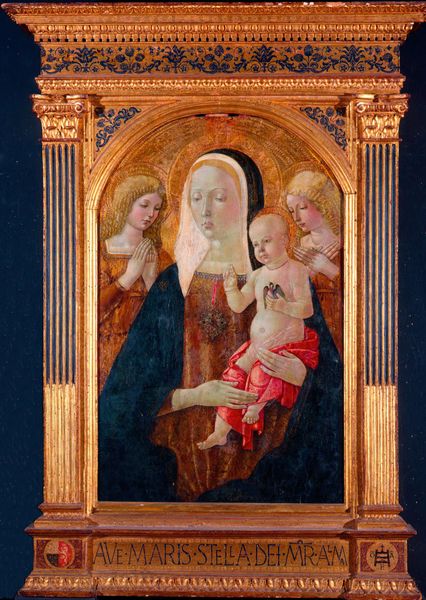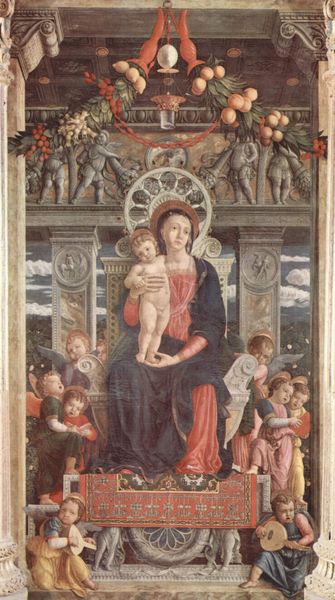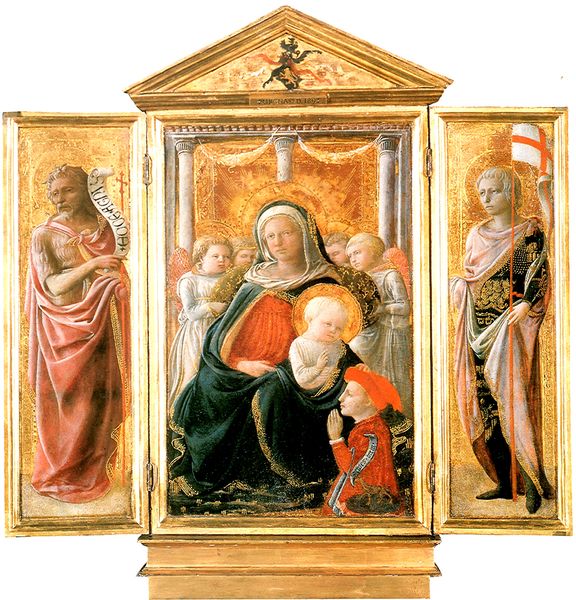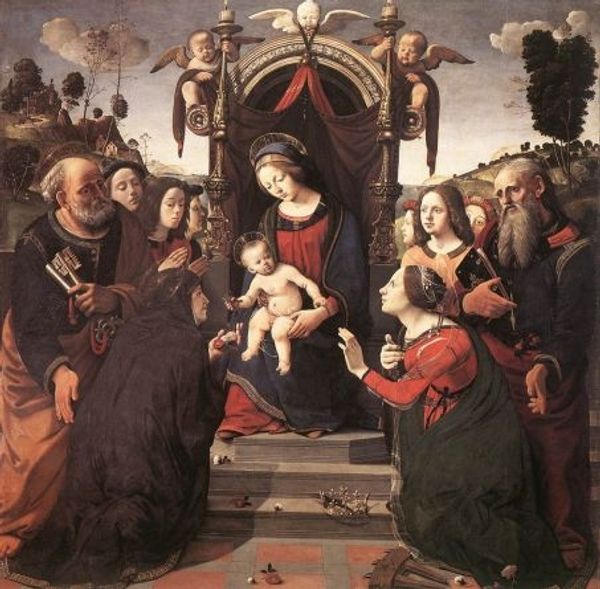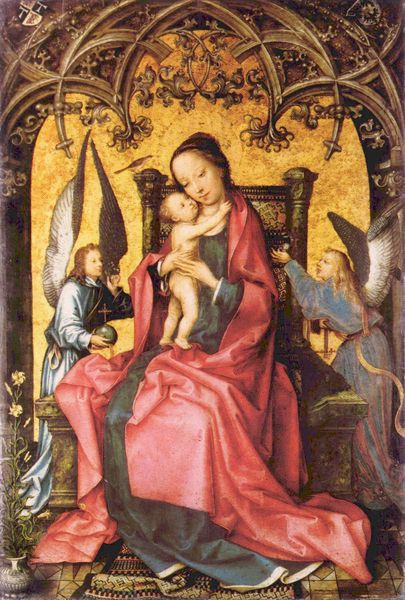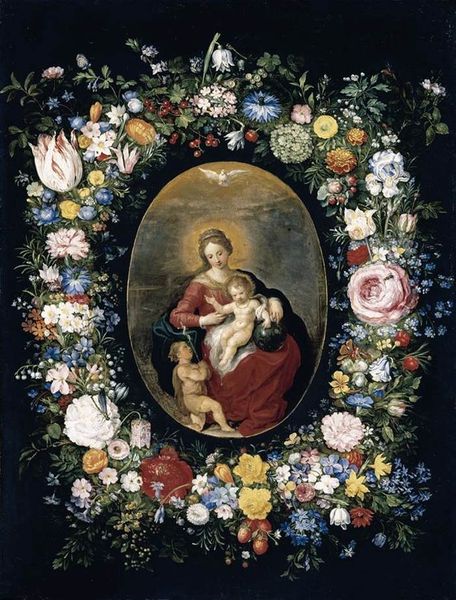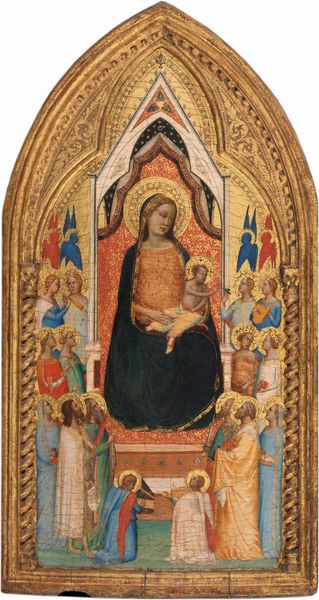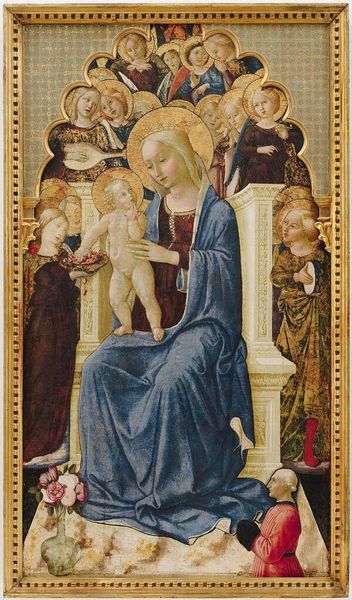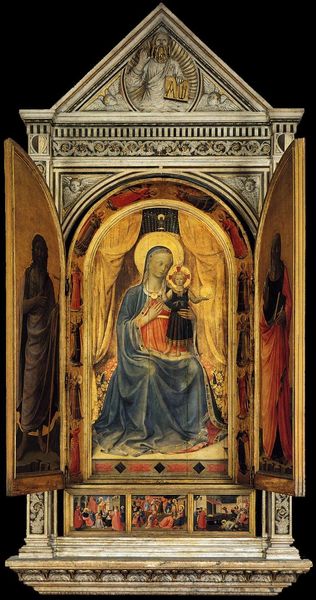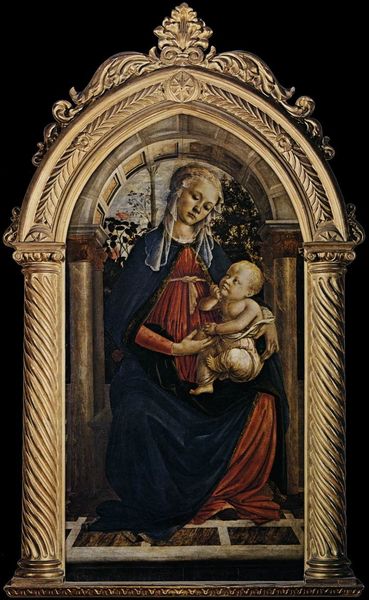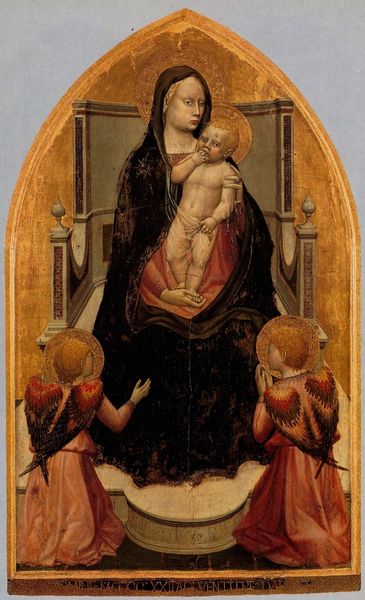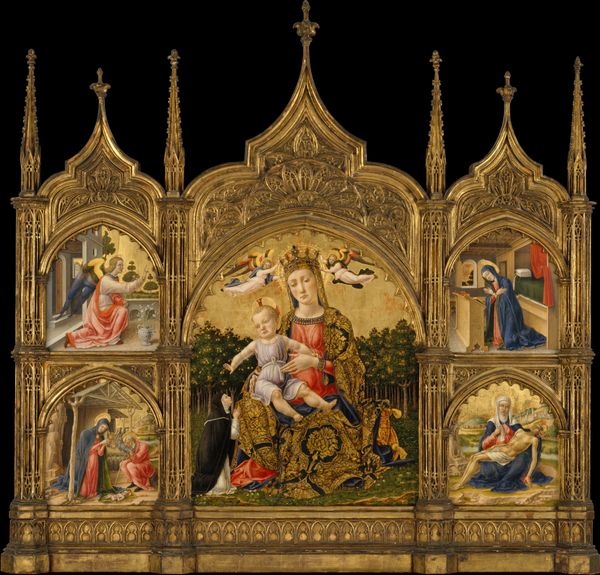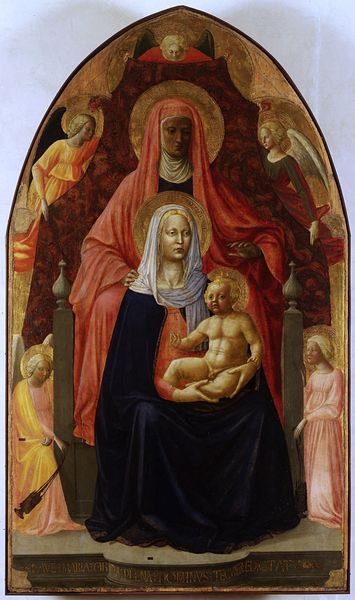
painting, oil-paint
#
portrait
#
painting
#
prophet
#
oil-paint
#
figuration
#
oil painting
#
child
#
history-painting
#
italian-renaissance
#
early-renaissance
#
virgin-mary
#
angel
Copyright: Public domain
Editor: So, here we have Jean Hey's "The Bourbon Altarpiece," also known as the Moulins Triptych, an oil painting dating back to 1498. It strikes me as intensely devotional, with the Virgin Mary at the center of a very formal and hierarchical composition. What do you see in this piece beyond the surface? Curator: I see a potent intersection of faith, power, and identity, meticulously crafted within the context of late fifteenth-century France. The Triptych operates on several levels, simultaneously serving religious and political functions. Have you considered the power dynamics at play between the figures depicted? Editor: Not deeply, no. It's clear who is royal, but can you expand on this a little bit? Curator: Notice how the donors, Pierre II, Duke of Bourbon, and his wife Anne of France, are integrated into the sacred space, almost as if they are being legitimized by divine approval. They're not just observers; they're active participants, kneeling in perpetual devotion. It speaks to a need for validating their rule through religious imagery, don’t you think? The altarpiece is a symbol of cultural production intrinsically linked with identity. Editor: That's interesting! It makes you wonder, were they as pious as they wanted people to think, or was this a calculated image? Curator: Exactly! And consider the Virgin’s portrayal. She embodies an idealized femininity, reflecting societal expectations of women and power within that patriarchal framework. This wasn't just art for art’s sake; it was a sophisticated articulation of cultural values and aspirations. How does knowing this shift your understanding of the work? Editor: I’m now seeing the painting as so much more than a religious scene. It’s like a carefully constructed piece of propaganda that speaks volumes about gender, class, and power at the time! Thanks for pointing all of this out. Curator: Absolutely. Thinking critically about art history means recognizing these intertwined layers. Looking at artwork from this point of view broadens its scope beyond just art history, and situates it inside a larger perspective on power.
Comments
No comments
Be the first to comment and join the conversation on the ultimate creative platform.
